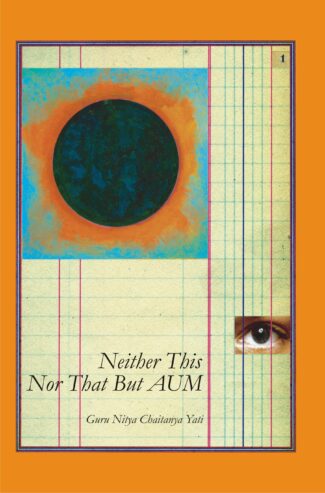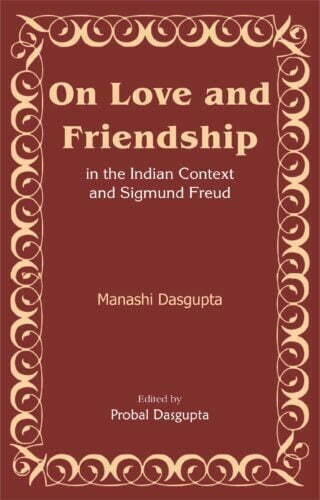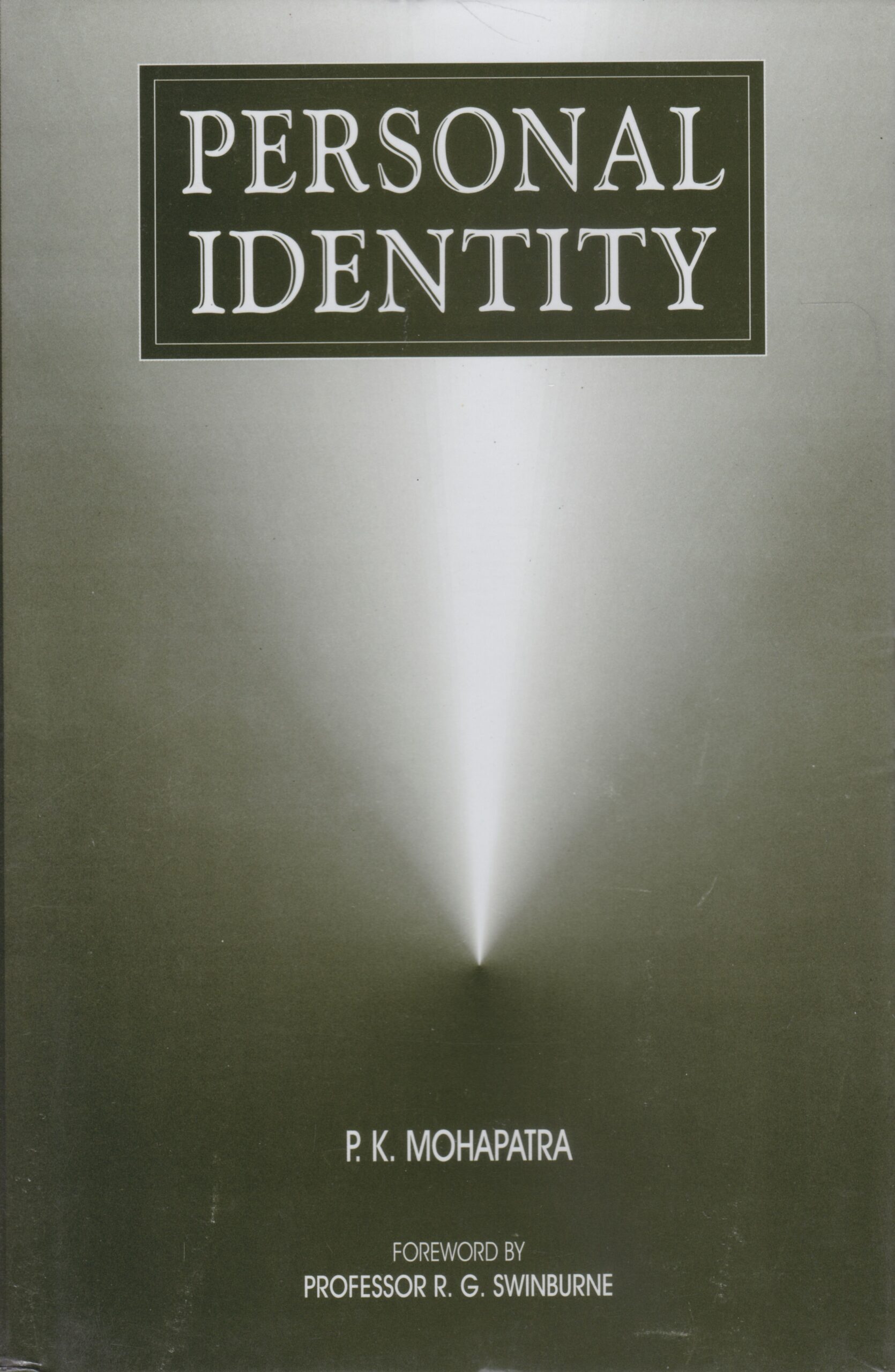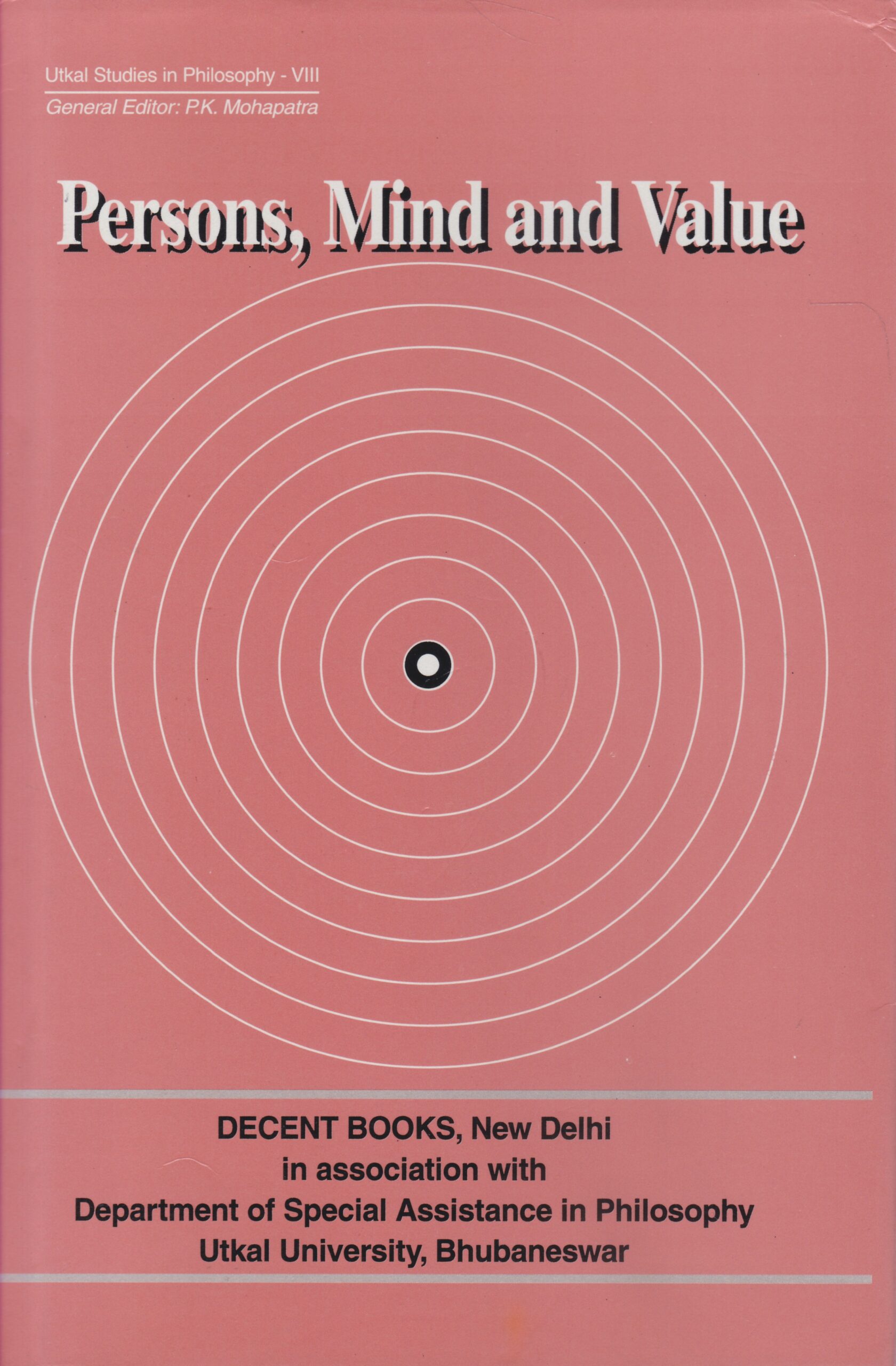Showing 141–150 of 270 results
“The philosophies in India evolved in the process of mutual rebuttal and confirmation. The Carvaka philosophy is very unique and well-marked among Indian philosophies as it is the only philosophy in India which corroborates materialism. The twenty-first century is the century of materialism. This philosophy known as Lokayata as well as Anviksiki is a logical system. In order to qualify to be a logical system it is necessary that this philosophy refutes the concepts of other philosophies and establishes its own concepts both on logical grounds. The philosophies such as Nyaya, Vaisesika, Samkhya, Jaina and Bauddha do the same; they refute the position of other philosophies on logical grounds and establish their own philosophy on the logical basis. But we observe this deficiency in the Carvaka philosophy as this philosophy is not developed in tune with the development of other philosophies for whatsoever reasons. Everywhere this philosophy appears only as a purvapaksa not siddhanta paksa. In this book there are redressals of the criticism of Carvaka philosophy by the celebrated philosophers like Dharmakirti, Santaraksita, Kamalasila, Udayanacarya and Visvanatha Nyayapancanana as well as their rebuttal from the Carvaka point of view. This book is a reaffirmation of the Carvaka philosophy on the basis of Carvaka concepts and logical grounds. This is an invitation to the philosophers for a dialogue. “
This book represents the philosophy of language in Navya-Nyaya, based upon an analysis of the “Verbal Suffix Chapter” (Akhyatavada) of Gangesha’s Tattvacintamani. Since this chapter elaborates what kind of verbal understanding is generated and discusses related issues, the book demonstrates the main features of that philosophy of language and serves as a good introduction to that. The analysis mainly deals with Gangesha, but in some cases it refers to Raghunatha. Since the book is an attempt to pursue philological exactness and philosophical analysis, it is hoped to interest not only Sanskrit scholars, but also philosophers in general.
The book consists of four lectures. Lecture I clarifies Gangesha’s view of the meaning of the suffixes of a finite verb, which (meaning) is greatly disputed among the Navya-Nyaya philosophers, the Mimamsa philosophers, and the Grammarians. Lecture II investigates how Gangesha determines the meaning of words and illustrates that his method bears upon ontological categories of Vaisheshika. Lecture III deals with Gangesha’s “Five Definitions of Invariable Concomitance Section” (Vyaptipancaka) and elucidates the relation between meaning and the logical structure of the definitions. The lecture also provides diagrams as a tool to represent the structure. Lecture IV explains the realistic standpoint of Navya-Nyaya by clarifying the concept of the counterpositive (pratiyogin) of absence (abhava), or a thing whose existence is negated, focusing on empty terms or non-factual expressions such as “a round triangle”, “the present King of France”, “a rabbit’s horn”, and so forth. The lecture delineates how Udayana, Gangesha, and Raghunatha observed and, as the time passed, did realism thoroughly in language analysis.

Are you faced with negative emotions such as jealousy, anger or pride? The only way to overcome these is by following the teachings of a Guru. Here is a beautiful book containing 108 teachings of a Sadguru which will lead you on the divine path.
The Nectar Words of My Master is a mala of 108 teachings, offered by an enlightened Master, that can be used as a day-by-day practical guide for spirituality. It deals with the trials of the human soul, when faced with negative emotions such as jealousy, anger or pride, and proposes a path towards the Light based on divine qualities and spiritual practice. Sri Sri Sadguru Swami Advaitananda Paramahansa always conveys eternal truth through simple speech, whenever He is being questioned by sincere seekers.

This volume, written originally in Malayalam, embodies a stimulating mystic composition, Atmopadesa Satakam (One Hundred Verses of Self-Instruction) unfolding magnificently the relationship of man with the cosmos.
The volume embodies a highly stimulating mystic composition : Atmopadesha Shatakam, literally One Hundred Verses of Self-Instruction, unfolding magnificently the relationship of man with cosmos. Written, originally in Malayalam, by Narayana Guru: a mystic, philosopher, visionary, and poet of yester-years, these verses are like the eternal beacon showing us the way to know the meaning of life through Self-awareness. The title, Neither This Nor That But . . . Aum, is derived from the last: the hundredth, verse of Atmopadesha Shatakam. The 99 verses that precede it clearly explain the This and That in which our lives become entangled. But as we progress from verse to verse, we find unveiled before us the untold magic of the silent Word: the secret of supreme realization. Guru Nitya, who is a key figure in the spiritual hierarchy of Narayana Guru, here reproduces all these ever-enlightening verses of Atmopadesha Shatakam : each in its Roman transliteration, together with its English translation, meaning and, besides these, also the guidelines for meditation. Each verse (of Atmopadesha Satakam), observes Edda Walker in her Foreword, is as perfect and complete as a rare pearl, and these perfect pearls are linked by the golden thread of pure essence, which is my essence, your essence, our inheritance.
Bhartrhari’s three unique compositions – Nitisatakam, Srngarasatakam and Vairagyasatakam – have been relevant for the last 2,000 years and above for their exclusively terse and epigrammatic character, and universally applicable teachings. The Nitisataka, although succinct and concise, is pregnant with the perpetual and everlasting doctrines, resulted from diverse experiences of life.
Although it has hundreds of printed editions available with commentaries and translations published in many parts of the globe, still this edition has been prepared along with recently discovered Kasmiri Sarada text, supplemented by critical notes on variant readings found in a Sarada manuscript, for the very first time in last 400 years, i.e. ever since the printing editions came into existence.
Most commonly accepted verses of the Nitisataka have been included in this edition, making a total of 111 verses, which is enriched with authentic translation and purports in Hindi and English.

Authored in twentieth century by Mahamahopadhyaya Phanibhushan Tarkavagish on the Nyaya-Sutras and Vatsyayana’s Nyayabhashya, this Bengali commentary is a very important treatise that integrates internal development of Nyaya philosophy and its all minute points. The Bengali commentary, rendered first time in Hindi, on the Lakshanasutras shaping the basic structure of Nyaya philosophy, is being produced here.
In Indian tradition, the Nyayashastra has been stated to be the central organ of perception and for the matter of that it stands out as the model of righteousness and chief stay of the ideas. It would not be out of place to remark that Nyaya, as a coherent branch of philosophy, has provided meaning, structure and form to the Indian thought process much in the same way as Aristotle has canonized Western speculation around an organized philosophic principle.
Since its inception in Gautama and till Gangeshopadhyaya and even otherwise beyond, the Nyayashastra has precisely retained its hold over speculation and intellectional conditions by bringing Sutra, Bhasya, Vritti and Prakarana to the contemplation of reason. Erudites such as Phanibhushan Tarkavagish, Ganganath Jha, Goipinath Kaviraj and Anantalal Thakur were amongst the masters of this tradition of thought in the nineteenth and twentieth centuries. Of these, the Nyaya principles embodied upon Tarkavagish’s contemplations remain one of the foundations of the whole system. His Nyaya-Darshana, originally written in Bangla, whose Hindi rendering on Lakshanasutra of Nyaya-Darshana has been produced in this volume, is one of the brilliant texts illustrating Nyaya-Darshana in a formulaic manner.
The merit of this text that explains and illustrates the basic structure of Nyaya in its totality and fullness is mainly underlain in the fact that it enables the readers to become one and all with its premises just as an able teacher facilitates a disciple to recreate knowledge into conviction. For the similar reasons, the present text that traces the growth and development of an analytical mode of philosophic learning over a period of 2,000 years is certainly a well- worth collection.

This book revolves around the insight that exchanging feelings and thoughts with friends, in the light-hearted style of open conversations but with the seriousness that only informality can underwrite, is a uniquely valuable mode of exploring questions; it alone nurtures the growth of personal accountability.
This book studies the constitutive role of friendship as a factor contributing to the environment required for serious discussion between accountable adults to take place. The context for this study is a vision that identifies an anti-hierarchical imagination as a prerequisite for democracy and seeks to fashion an institutional format based on friendship, outside patriarchy. This India-focused study, which draws on philosophy, literary/historical analysis, psychological theory and fieldwork, revolves around the insight that exchanging feelings and thoughts with friends, in the light-hearted style of open conversations but with the seriousness that only informality can underwrite, is a uniquely valuable mode of exploring questions; it alone nurtures the growth of personal accountability. The capabilities of this mode as a site for the development of such maturity, the author suggests, go beyond what the institutional structures of academia and other public spaces can possibly support, given the masks that formal structures force on their participants.
The author argues that friendship is a metaproject, a crucible within which projects are incubated; this structural fact makes it difficult to initiate friendships if one is a very young child, not yet able to understand what projects are, or a very old adult, no longer willing to launch any. It is in the context of that argument that the author considers the Freudian view that all acts of friendship are nothing but sublimated manifestations of eros; she suggests that such a claim conflates issues of origin with issues of validity and ignores the metaproject character of friendship bonds.

A unique pedagogical method of teaching of Advaita is presented in the Sanskrit trans-creation of Nishcaladasas Vicharasagara and its tippani by Pitambar, by Vasudeva Brahmendra Sarasvati, depending on the need of different types of seekers uttama, madhyama and kanishtha adhikaris simplifying the teaching and learning of Advaita even for laymen.
This book is a critical study of the Sanskrit trans-creation of Vicharasagara by Vasudeva Brahmendra Sarasvati of Nishcaladasa in one of the dialects of Hindi and its tippani by Pitambar, again in the same dialect, imparting a unique teaching technique of Advaita to different types of aspirants. The book thus unfolds the teaching of Advaita depending on the need of different types of seekers uttama, madhyama and kanishtha adhikaris. The volume focuses on two layers of concerns: first, of the appropriate modifications made by the trans-creator using simple Sanskrit and second, in the dialogue between the guru and the different adhikaris.
This critical study introduces us to: (i) the life and works of Nishcaladasa, Pitambar and Vasudeva Brahmendra; (ii) emergence of adhikari-based pedagogy system; and (iii) the employment of pedagogical tools by the guru, depending upon the character and needs of the seeker. The related questions and discussions found in different tarangas of Vicarasagara are pooled in and presented in a cohesive manner to arrive at the core of Nishcaladasas work. It also delves deep into topics such as meditation and its efficacy as a means to gradual liberation, and the nature of liberation.
The book, therefore, introduces the well-defined concepts of Vedanta in a simple pedagogical way as a dialogue between the preceptor and the student, helping even a layman to understand the nuances of Advaita, otherwise a hard subject to digest and grasp.

The research studies the problem of personal identity, dealing with the nature/source of the problem, the approach of traditional/modern philosophers and its proper analysis. It finally shows that bodily continuity is the primary criterion of personal identity.
One of the most discussed of current topics in Philosophy of Mind is the problem of personal identity the problem of what, if any thing, makes a later person the same person as an earlier person. The book is a rare attempt to analyse the problem in its various aspects and develop a theory by way of answering the questions involved. It divides itself into three parts dealings with (1) the nature and source of the problem; (2) how it has been approached by various philosophers, traditional and contemporary; and (3) what a proper analysis of it will amount to. The theory that eventually issues out of this analysis is that bodily continuity is the primary criterion of personal identity and the claim of memory as the sole, or even primary, criterion is definitively disallowed. The ideas of disembodied existence and survival, which imply and rest upon the primacy of the memory criterion, are shown to be what they are, i.e., intelligible only in a secondary sense. Of special interest to philosophers is the finding that the problem at issue is a problem of criterion and not of defining personal identity and also an interesting and original trichotomy between definition, criterion and necessary condition.

Exploring the link between persons and values, the work delineates the concept of moral personhood. It studies personhood with respect to animal consciousness and artificial intelligence and admits to levels in the application of personhood to human and non-human beings.
Persons, Mind and Value focuses on the link between persons and values: and as values are linked with the mentality of the subjects, relevant features of mind have been brought to focus.Philosophical accounts of personhood have often been used for building normative ethical theories and persons have usually been thought of as moral agents, responsible for their actions done with freedom. Against the backdrop of this, the authors have attempted to delineate the concept of moral personhood which, they argue, is built on spirituality and moral commitment. Although morality is not entirely a matter of pure rationality and moral agency requires self-transcendence and spirituality, the book nonetheless brings out a stricter sense in which moral personhood applies to beings who are rational moral agents. Persons being rational as well as spiritual beings implies that they be moral beings.In course of the defence of such concept of moral personhood, interesting contrast has been made between personhood vis-a-vis (higher) animal consciousness on the one hand and artificial intelligence on the other. And illuminating allusions are made to the possibilities of non-human persons and human non-persons which inevitably lead to conceiving personhood admitting of degrees or levels in its application to human as well as non-human beings. However a firm defence is given to the theory that moral personhood cannot apply to beings who are not even minimally rational.The book is an excellent exercise in analytic elucidation and will immensely benefit students, researchers and anyone interested in moral philosophy and philosophy of mind.
| There are no products |